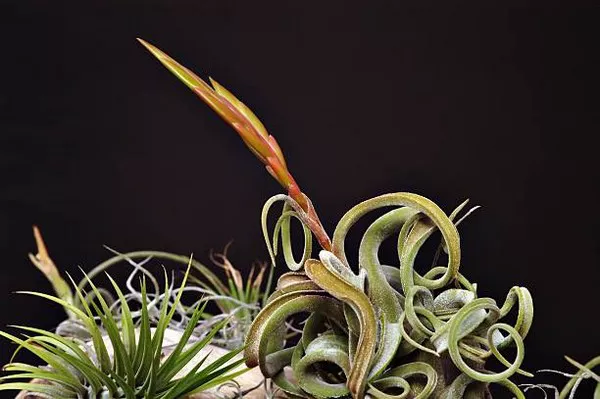The remarkable world of plants never ceases to amaze us with its diversity and ingenuity. While many of us are familiar with the traditional process of seed reproduction, plants have also evolved alternative methods to propagate and ensure their survival. Asexual reproduction, a mechanism that does not involve seeds, is a captivating aspect of plant biology that deserves our attention. In this article, we will explore how plants reproduce without seeds and the fascinating mechanisms they employ to perpetuate their species.
Asexual Reproduction: The Basics
Asexual reproduction in plants involves the creation of new individuals without the fusion of male and female gametes (sperm and egg cells), which is the hallmark of sexual reproduction in plants. Instead, a single parent plant can give rise to one or more offspring that are genetically identical to the parent. This process eliminates the genetic variation seen in sexual reproduction but offers several advantages, such as rapid propagation and a guaranteed genetic legacy.
Methods of Asexual Reproduction
Vegetative Propagation:
Stolons and Runners: Some plants, like strawberries and spider plants, produce horizontal stems known as stolons or runners. These stems creep along the ground, producing roots and shoots at various points. Each rooted shoot can develop into a new plant, genetically identical to the parent.
Rhizomes: Plants like bamboo and ginger use underground rhizomes for asexual reproduction. Rhizomes are modified stems that grow horizontally underground, giving rise to new shoots and roots at intervals.
Offsets: Plants like aloe and agave produce offsets or “pups” near the base of the parent plant. These offsets can be separated and planted to create new individual plants.
Bulbs and Corms: Species like tulips and gladiolus reproduce through bulbs and corms. These underground storage structures can give rise to new plants when separated and planted.
Cuttings:
Taking a cutting from a parent plant and encouraging it to develop roots is a common method of asexual reproduction. This method is widely used in horticulture and allows for the cloning of desirable plant varieties. Stem cuttings, leaf cuttings, and root cuttings are all variations of this technique.
Grafting:
Grafting involves joining a shoot or bud (scion) from one plant onto the rootstock (root and lower stem) of another. This method is often used to propagate fruit trees and roses. Grafting can combine the desirable traits of two different plants while maintaining the genetic identity of the scion.
Layering:
Layering is a method in which a branch or stem of a parent plant is bent down and partially buried in the soil. Over time, roots develop along the buried portion, and a new plant can be separated from the parent once it has established itself.
Apomixis:
Some plants have evolved a unique form of asexual reproduction called apomixis. In apomictic plants, seeds are produced without fertilization, and the resulting seedlings are genetically identical to the parent plant. While this method is relatively rare, it is a fascinating example of asexual reproduction in the plant kingdom.
Advantages of Asexual Reproduction
Asexual reproduction offers several advantages to plants:
Rapid Propagation: A single parent can produce numerous offspring relatively quickly, ensuring a higher chance of survival.
Conservation of Desirable Traits: Horticulturists and farmers can clone plants with specific, desirable traits, such as disease resistance or high fruit yield, ensuring the preservation of these characteristics.
Guaranteed Genetic Legacy: In environments where pollinators may be scarce or unpredictable, asexual reproduction provides a reliable way to pass on genetic material.
Colonization and Expansion: Asexual reproduction allows plants to colonize new habitats efficiently, especially in favorable conditions.
Challenges of Asexual Reproduction
While asexual reproduction offers many benefits, it also presents some challenges:
Lack of Genetic Diversity: Asexual reproduction leads to offspring that are genetically identical to the parent. This lack of genetic diversity can make populations more vulnerable to diseases and environmental changes.
Accumulation of Mutations: Over time, accumulated mutations can affect the fitness of a clone population, potentially making them less competitive in changing environments.
Resource Competition: Clonal populations can compete with each other for limited resources, potentially leading to reduced overall fitness.
Limited Adaptability: Asexual reproduction may limit a plant’s ability to adapt to new and changing environmental conditions.
Conclusion
The world of plants is a testament to nature’s remarkable adaptability and resilience. While sexual reproduction through seeds remains the predominant method of plant propagation, asexual reproduction offers a unique and efficient way for plants to ensure their survival. From the creeping stolons of strawberries to the underground rhizomes of bamboo, the diverse methods of asexual reproduction showcase the creativity of plant biology.
Understanding these mechanisms not only deepens our appreciation for the natural world but also provides valuable insights for horticulture and agriculture. By harnessing the power of asexual reproduction, we can propagate desired plant traits, increase crop yields, and contribute to the conservation of endangered plant species.
As we continue to explore the intricate world of plant reproduction, we are reminded of the countless ways in which nature has adapted to thrive in the face of challenges. Asexual reproduction is just one of these remarkable adaptations, demonstrating that even in the absence of seeds, life finds a way to perpetuate itself.


